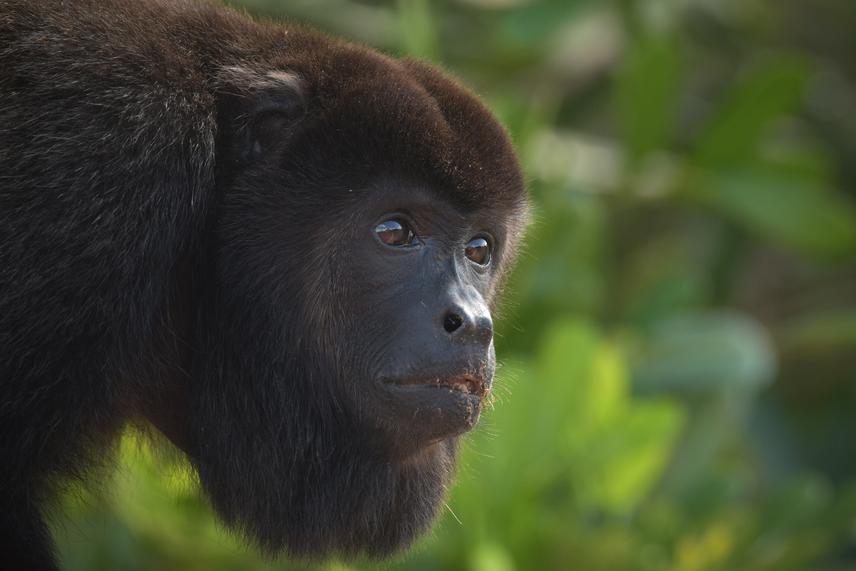María Fernanda Alvarez Velazquez
Pollution in natural habitats is a growing but often overlooked threat to endangered primates. Despite its potential consequences, little is known about exposure levels in non-human primates and their ecosystems. In southern Mexico, mass mortality events of Alouatta palliata mexicana were reported in mid-2024. This species is listed as endangered by the IUCN and inhabits the Los Tuxtlas Biosphere Reserve (LTBR), the only primate conservation priority area in Veracruz, Mexico, with protected status.

Adult male Alouatta palliata mexicana. © Jorge Ramos-Luna.
Unfortunately, intensive agriculture, cattle ranching, population growth and, in recent years, mining have led to an 84% reduction of the original forest inside the LTBR, leaving A. p. mexicana populations exposed to disease, stress, extreme heat, and pollution. The ecotoxicological consequences of decades of human disturbance in the area remain unclear.
This project will quantify microplastics, organochlorine pesticides, and toxic metals in soil, filter-feeding animals, vegetation, and feces of A. p. mexicana across the LTBR. To assess pollutant exposure, we will collect samples from different sites where howler monkeys reside. We will also measure fecal cortisol and estradiol to evaluate potential physiological responses to these pollutants. To our knowledge, this will be the first study to document microplastics in American non-human primates. Understanding these threats is crucial for improving waste management policies and preventing toxic exposure. Additionally, primates serve as bioindicators of environmental health, providing insight into human exposure risks.
Expected outcomes include scientific publications and diverse outreach initiatives. Community workshops will directly engage local stakeholders, presenting data in an accessible format using visuals, simple language, and culturally relevant analogies to foster understanding and engagement. Additionally, we will organize outreach talks, festivals, and a documentary film integrating visual storytelling with scientific findings to reach both local and international audiences. These efforts aim to promote conservation practices in daily life and foster long-term community involvement across various LTBR locations.
Results will be shared with local schools, churches, government agencies, and NGOs working in the region to support decision-making and advocacy for improved environmental policies.
This work represents an essential first step in generating the scientific knowledge needed to support a comprehensive conservation strategy led by authorities, ensuring a healthier future for howler monkeys and their habitat.
Header image: Juvenile Alouatta palliata mexicana. © Jorge Ramos-Luna.